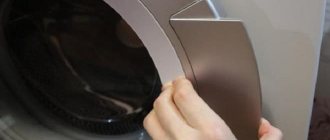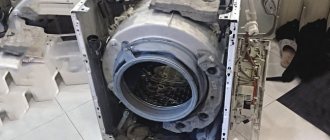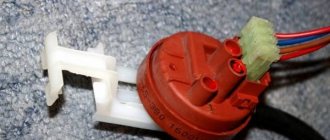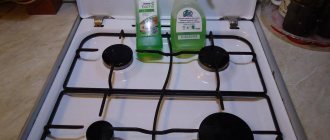We answer the reader’s question, analyze the reasons, and give advice.
I rarely use a pen. There is a smartphone for notes and reminders. Sometimes you have to sign contracts, postcards, and make some notes. But not that often. It happens that I don’t use it for a month or two. I like gel pens because they write beautifully and richly. But there is a problem - they quickly stop writing. It’s especially disappointing when the pen is brand new and has only been used twice. Why is this happening? What should you pay attention to when purchasing, so as not to end up in such situations again?
Roman Voznikov
Thanks for the questions, Roman. Let's look at them in order.
Fountain pen problems and 11 simple steps to fix them
Simple ways to fix “complicated” fountain pen problems
When a fountain pen is in good working order, it glides easily across the paper. The feel of writing with a fountain pen is one of the reasons why people prefer this type of writing unit. But as soon as problems arise with the tool, their owners begin to experience difficulties in eliminating them. For example, pens may begin to scratch the paper with a pen, ink may begin to flow poorly, or stop flowing altogether. Conversely, the pen may eject too much ink, leaving blots on your documents or even your clothing, for example, when carrying the pen in the pocket of your favorite jacket.
These problems do not affect all fountain pens, but can occur in copies whose owners have forgotten about basic maintenance to ensure that the writing instrument is in good working order. Fortunately, all maintenance comes down to simple steps that you just need to remember.
Step 1: Clean the pen if it is clogged
Many craftsmen claim that the pen and ink supply system should be soaked in cold water for one day to remove old dried ink from all channels. In fact, a good flushing of the capillary system should be done at least once a month, without waiting for the channels to become clogged. Another good practice is to add a small amount of water to the ink held in the pen and feeder, which may partially evaporate after a few days of non-use. To do this, place one drop of water on the tip of your finger and touch the gap between the teeth of the pen. If the pen has not been used for more than a few days, add two or three drops of water and let it soak. If you do not plan to continue using your pen for some time, then simply perform this procedure at intervals of once a week.
For more serious cases, such as when ink has remained in the pen for several weeks of non-use, draw water into the palm of your hand. Quickly lower the entire section of the writing unit of the pen into the water in your hand and just as quickly remove it. Close the pen with a cap and keep it in this state for about an hour before using. If after the procedure the ink on the paper is too light, simply wipe the pen with a well-absorbent cloth to remove excess water or watery ink.
Fountain pens don't like long periods of non-use. If you are not going to use the pen for an extended period of time, empty it of ink and rinse the pen with water until it stops staining.
Do not mix ink from different manufacturers. They often have different compositions and can react with each other to form a thick gelatinous substance that clogs the channels in the pen. Use only fresh ink that has been sealed tightly or fresh cartridges. Manufacturers fill the air space in the ink bottle with an inert gas such as nitrogen before sealing it. They do this to prevent the ink from oxidizing.
Step 2: Fixing a scratchy pen
A magnifying glass with good magnification is very helpful when correcting flaws in the pen nib. The drawings below are a little out of proportion, but they do a good job of illustrating the problem in question. They show the pen's nib as if we were looking up at it. The left side shows the handle with the teeth properly aligned. The two halves of the iridium ball are aligned with each other, and the pen will write smoothly. The handle on the right may have been dropped or misused. For some reason the halves of the iridium ball at the end of the pen are misaligned. The pen will scratch the paper with its sharp inner edges. Gently press down on both sides with your fingernail (alternately) to align them. Check your progress with a magnifying glass as often as possible. If the pen is made of steel, it should respond well to your manipulations. Other materials may be more difficult to shape.
Any fountain pen will write smoother over time because as you use it, the nib becomes more polished through contact with the paper, adapting to your writing style. The exceptions are trying to write on poor paper that is not suitable for a fountain pen and using cheap pens with poorly designed nibs.
If the nib has a hard time starting to write, requiring extra pressure, but then writes quite well with moderate pressure, the problem may be that the gap between the tines remains uniform up to the area near the iridium ball. If the pen is bent so that the teeth are too far apart, the ink simply won't be able to get onto the paper. This is where a magnifying glass comes to the rescue. Carefully, without scratching, squeeze the two halves of the ball together with thin pliers until the gap between the teeth becomes moderate again.
Step 3: Space Between Teeth
This Waterman pen passes too little ink. I solved this problem in the following way: by placing my finger on the top of the nib and pressing lightly against a hard surface, the gap between the teeth and the ink widened slightly. However, be careful not to increase the space between the pen and feeder too much. See step 8.
Wahl Eversharp once made a handle with an adjustable slot between the teeth. This solution made it possible to control the amount of ink supplied to the paper. Essentially, this allowed the thickness of the writing to be adjusted between medium and thin. See also step 6 for bringing the teeth closer together.
Step 4: Teeth Spacing
The correct tooth spacing depends to some extent on the viscosity of the ink you use. Different pen manufacturers specify different ink compositions because they design their pens for a specific ink viscosity. Some inks may be too thick to work properly in some pen models. Sometimes I add a little water to dilute such ink so that it flows better in a particular pen. The correct spacing between teeth is approximately the thickness of a sheet of carbon paper. If you're using a thickness gauge, 0.003 inches is about the same.
Step 5: Another Way to Spread the Teeth
The teeth on this Parker were too close together. Spring steel nib. The tip assembly unscrews from the section. The nib does not slide off the feeder like most pens, but is attached to it using ridges. You can use a jeweler's screwdriver to push the tabs away so you can use a thickness gauge to set the teeth apart a little. Yes, in this case I decided to use a thickness gauge rather than just pressing on the front of the pen. But trying to push the teeth apart by twisting the feeler gauge into the slots can result in a “V” forming at the end between the halves of the iridium ball. See step 2.
Handles have their own personality. A friend gave me another pen, just like this one, but for color. This pen needs a little adjustment to ensure the pen doesn't skip when writing the letter "T". The other pen does not skip under the same conditions.
Step 6: When the teeth are too far apart
It used to be that you could buy a Namiki Vanishing Point fountain pen at an office supply store. One day, someone unfamiliar with fountain pens pressed the pen so hard on the paper that when the ink dried, the teeth splayed out. Later this pen fell into my hands. I placed one of the prongs on a hard surface. He placed the screwdriver over the other prong, level with the length of the pen slot, and pressed gently. Next, I turned the handle over and repeated the procedure on the other side. So I set the teeth back to their proper gap.
Step 7: Cleaning the Ink System
Fountain pens work based on a controlled flow of ink. The key to this is the correct contact and clearance ratio between the pen and the ink system. If done correctly, you should be able to pull a piece of paper between the pen and the feeder with enough resistance. When the pen and feeder don't match, several problems arise: the ink won't flow, or the pen will leak.
Step 8: Restoring the correct gap between the pen and the ink system
Feed systems are usually made of plastic. Vintage fountain pens from the 1920s and earlier were often made of hard rubber. The good news is that both can change shape using heat. Some people use alcohol torches. I find it much safer to use very hot water.
Fill a measuring cup with a couple inches of water. Place the cup in the microwave and heat the water until it boils. Remove the cup and place the pen and ink system in water for 15 seconds. Remove the pen from the water and press the feeder against the tip. Use moderate pressure and do not release until you are sure the plastic has cooled. It's also about 15 seconds. If you don't get the results you want the first time, you can repeat this process.
Step 9: Scratches or tears in the ink system
It is important that there are no grooves at the top of the feed system where it meets the bottom of the pen, otherwise air will get into the system. You can paint over any unwanted grooves with clear nail polish. When it's almost set, place a piece of paper on top of a smooth, hard surface. Turn the feeder over and slide it across the paper, pressing the feeder against the paper. Turn the knob as you move the feeder across the paper. The top of the feeder will become smooth.
My wife got this Diplomat pen on very favorable terms. I struggled with it for a long time and could not get it to write. I thought too little air was getting back into the reservoir and I made the big mistake of cutting a small groove out of the channel in the outward delivery device. Later I had to seal the small groove with nail polish and use the paper on a smooth surface trick to correct this mistake. Then I had to deal with the real problem, which was poor contact between the pen and the ink system (see previous step). This is now one of my favorite pens to use and a pleasure to use.
Step 10: What a left-handed person might encounter
This is a Namiki Vanishing Point fountain pen. When the pen is extended to write, the pocket clip rests between the thumb and forefinger. Left-handers tilt the handle slightly, and this makes it difficult to use this particular model due to its peculiarity. In those days when fountain pens were very popular, special models were made for left-handers. Today you can also find models for left-handers, but you still have to look for such a pen. I used a very fine-grit knife sharpening stone to smooth out the point of contact with the paper so that I could write properly with my left hand. I held the pen at an angle, as if the surface of the sharpening stone were a piece of paper, and moved the pen as if I were writing. Use a magnifying glass to monitor your progress. The disadvantage of sanding is that the surface will not be perfectly smooth, but it will smooth out over time with use of the pen.
Pay attention to the second photo. Namiki has released an update to this pen with a thicker barrel. It is easier to hold, but I did not have the opportunity to purchase it. I went to my local hardware store and bought a short piece of 1/2" ID clear vinyl tubing and wrapped it around the handle in the grip area. Overall this solved the problem, I may have to remove it if I want to use the pocket clip.
Step 11: Other Problems for Lefties
I have a Schaeffer brand handle with two flat sections for the fingers in the grip area. This greatly improves the grip for righties, but makes using the handle a pain for lefties. I coated these areas with nail polish and let them dry. By adding a few more layers I built up these sections, making the barrel handle almost round. Now I can use the pen comfortably.
Return to list
How to clean the pen core from paste?
Alcohol and alcohol-containing solutions: cologne, vodka. Alcohol dissolves the paste, but color stains may remain on the fabric. On artificial leather, alcohol only removes fresh marks. It will not be possible to completely remove an old ballpoint pen stain with alcohol: it will only lighten, but will not disappear.
Interesting materials:
Who is switching to a 4-day work week? Who is the first bachelor or master? Who should sign the contract first, the customer or the contractor? Who should sign the contract first? Who pays sick leave first? Who signs the order first? Who first came up with a pension? Who was the first to set foot on the shores of Antarctica? Who is the first to enter the new house? Who is the end of February according to your horoscope?
How does a pen write?
Ballpoint pen ink (ink paste) is oil-based with added pigments or dyes to give it a variety of colors. Due to the simplicity of their design, ballpoint pens are cheap and widely used.
Interesting materials:
Do I need to highlight a word, for example? Where do borrowed words come from? Where did swear words in Russian come from? Where does the word director come from? Where does the word purple come from? Where did the word degree come from? Where does the word flap come from? Where did the word Udmurt come from? Where did the word bear come from? Where did the word understood come from?
What to do if the pen does not write
- If a ballpoint falls out of a ballpoint pen, it cannot be saved. You won't be able to insert the ball, but you can get the paste dirty from head to toe. Accept the loss.
- If the paste of a gel or ballpoint pen has leaked out of the refill, the easiest way is to throw it away, since when cleaning it and subsequent use there is a high chance of staining both yourself and the environment. But if there is no choice, then disassemble the mechanism on sheets of paper and wipe each part with wet wipes. Then assess the level of paste in the rod, blow it out and assemble the handle.
- A new pen often writes poorly due to poor ball break-in. This is why a new pen needs to be painted, and in some cases, a little more effort than usual.
- If a pen doesn't write after it hasn't been used for a couple of months, it usually means the paste has thickened too much. And if you don’t use it even longer, the paint inside the rod will completely dry out. To solve this problem, experts advise using one of two methods. The first is to heat the metal tip with a lighter to soften the ink. It is not recommended to use it due to the fact that open fire is unsafe. In addition, this way you will most likely just melt the plastic rod. The second way is to hold the rod under hot water. This technique is safer. If it is not possible to use hot water, then you can simply rub the rod in your palms.
But sometimes malfunctions occur not with a cheap ballpoint or gel pen, but with a more expensive and prestigious one - a fountain pen.
How is ink made?
Ink for ballpoint pens is made in the form of thick pastes on a wax-fat basis. As a rule, such a paste contains a fat-dissolved dye, less often a suspension of pigment, which, when writing, is continuously lubricated and applied to a ball, leaving an imprint of an ink trace on the paper.
Interesting materials:
Where was Hurrem living when she was kidnapped? Where did Ellie's family live? Where did the Massagetae live in Kazakhstan? Where does Alan Walker live? Where do Grandma Nina and her granddaughter live? Where does the Barguzin sable live? Where do most Armenians live? Where does Daria Melnikova live? Where does Face live? Where does the blind main character of the series live?
Corrector pen
A correction pen is an indispensable attribute of any student. It is found in any office and often helps out when you need to quickly and quietly correct a mistake. But what to do if the corrector pen does not write?
In fact, they dry out quite quickly and also often begin to leak, which complicates the work.
If the new correction pen does not write, then it must be shaken well for several minutes. Then remove any leaking marks on the tip. And you can start working.
If this doesn't work, try pressing harder when correcting mistakes - this will release more of the corrective agent. In cases where the corrector is water-based, when it dries out, you can soak the tip and the pen will work again.
How can I find out the expiration date of a pen?
This information cannot be found on a separate pen. It is on the set and box. If this is important, check with the seller.
What to do if the pen doesn't write? Of course, this stationery item is inexpensive, and you can always buy a new one. But sometimes with each new purchase we get another problematic pen - they either don’t write at all or stop leaving marks on the paper after a while.
And many people are concerned about the question of whether they can somehow be revived. So, here you can find out what to do if the pen does not write.
Types of faults
What could be wrong with your pen? There are quite a lot of malfunctions, we list the most common ones:
- The new pen writes intermittently, in strokes, and a creak is heard.
- The pen doesn't write after it hasn't been used for a while.
- The paste has dried out.
- The ballpoint pen is missing a ball.
- The paste has leaked out of the rod.
In order to determine why the pen does not write and what to do if there is no way to immediately buy a new one, you need to carefully examine it. Most often, the cause of the malfunction is determined fairly quickly, after which it is necessary to decide whether it is possible to somehow revive it and bring it into working condition.
How should the handle be positioned?
If the pen has a cap, then you can place it in a glass with the cap facing up, and if it is an automatic pen, then it is better to place it in the glass with the writing block down, having first removed the rod inside.
Interesting materials:
How to obtain excise tax on alcoholic beverages? How to obtain aldehydes? How to get banned in contact? How to get free delivery at Burger King? How to get a ticket using a route receipt? How to get a house in Windhelm Skyrim? How to access government services? How to access a taxpayer’s personal account? How to get charcoal for barbecue? How to get a pension?
A fountain pen
What to do if your fountain pen doesn't write? Typically, inexpensive items suffer from this problem, while exclusive hand-built models are less susceptible to such malfunctions. But occasionally problems arise for them too.
If the new pen writes intermittently and with a slight squeak, this is a break-in problem, exactly the same as with a ballpoint analogue. The pen needs to be painted, and this takes time and patience.
But what to do if the problem does not disappear over time? Most likely, the problem is the factory lubricant that has clogged the feeder channels. Occasionally, tiny metal shavings may end up there. In case of this problem, it is recommended to rinse the pen:
- Disassemble the mechanism.
- Rinse under running water to remove the ink. Use only cold water, as hot water can deform some parts.
- Soak the feather for 1-2 hours in clean water.
- Dry the handle. The procedure will take from 12 to 24 hours.
- Assemble the mechanism.
Also, washing a fountain pen should be done if it has not been used for a long time and there is a risk that the ink has dried out. If the pen malfunction cannot be resolved by washing, you should contact customer service.
What to look for when buying a pen for occasional use?
Let's look at the options for pens that meet the requirements - they write beautifully and do not dry out for a long time.
Immediately sweep away the liners and capillary ones. Undoubtedly, they write beautifully, elegantly and are even suitable for calligraphy. But there is a significant drawback - they dry out quickly. Because they are actually felt-tip pens, but made using pen technology.
Ballpoint pens last the longest because the paste contains an oil rather than a water-based substance. The shelf life of such pens is from 2 to 5 years. But not all of them write beautifully. Cheap ones can smear, skip, and leave an unevenly saturated mark. For inexpensive models, you should take a closer look at the Uni and Pilot brands. They write richly and accurately.
With rollerballs, you don't have to worry about the ball spoiling or the contents of the rod sliding down. Simply because the ball rotates 360 degrees, and the writing is made of water. The shelf life is generally 2-3 years. But for some manufacturers, for example Pentel, it can reach 5 years. The rollerballs write beautifully and are pleasant to use.
Gel pens should not be dismissed either. Plus, no other pen leaves such a beautiful glossy mark. Their shelf life is from 2 to 3 years. If stored correctly. In addition, some manufacturers, such as Zebra, add pigments to the writing medium to increase viscosity. Such rods do not need to be painted and there are no problems with the ball.











